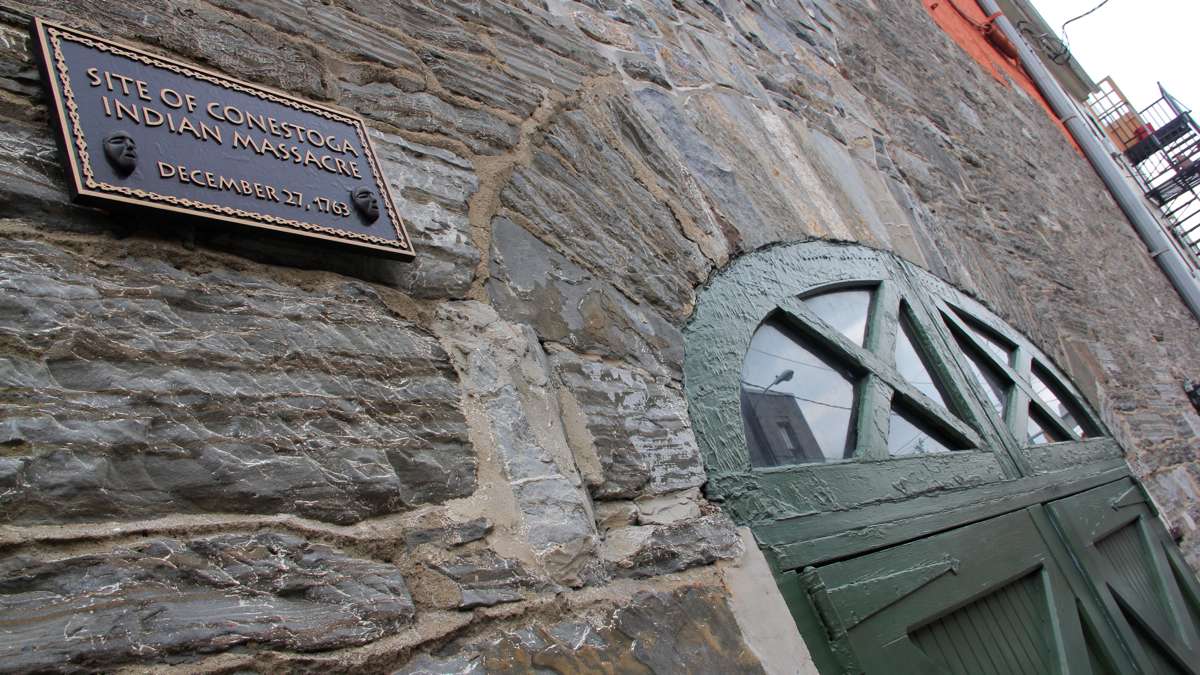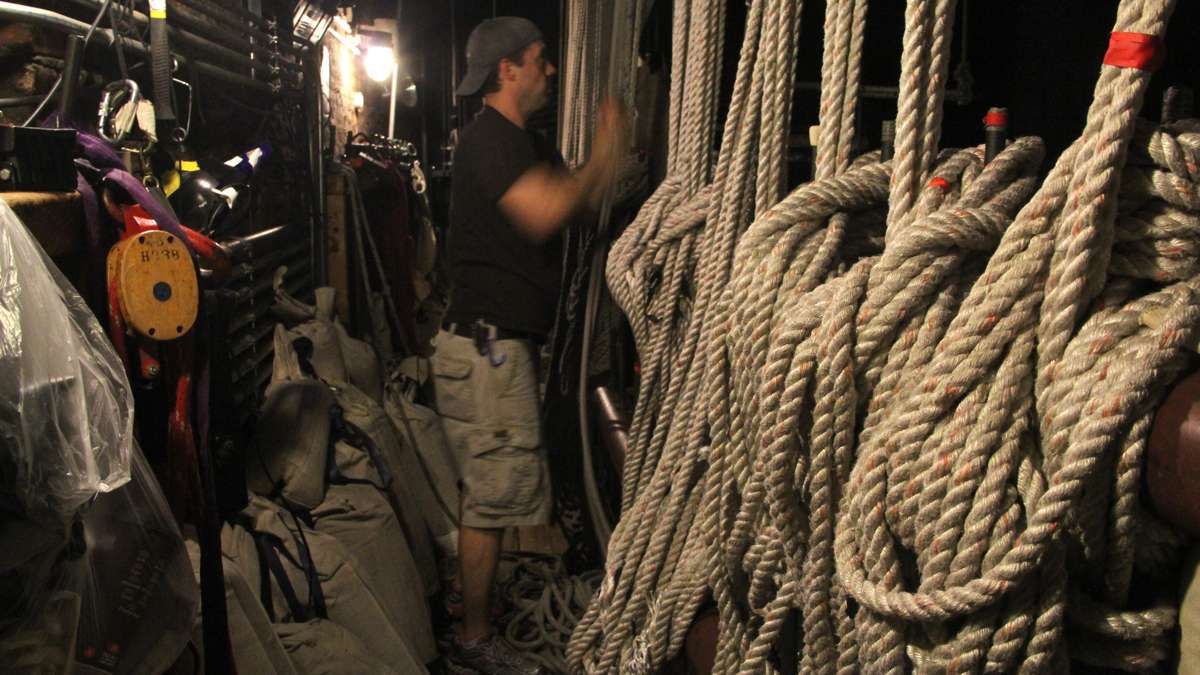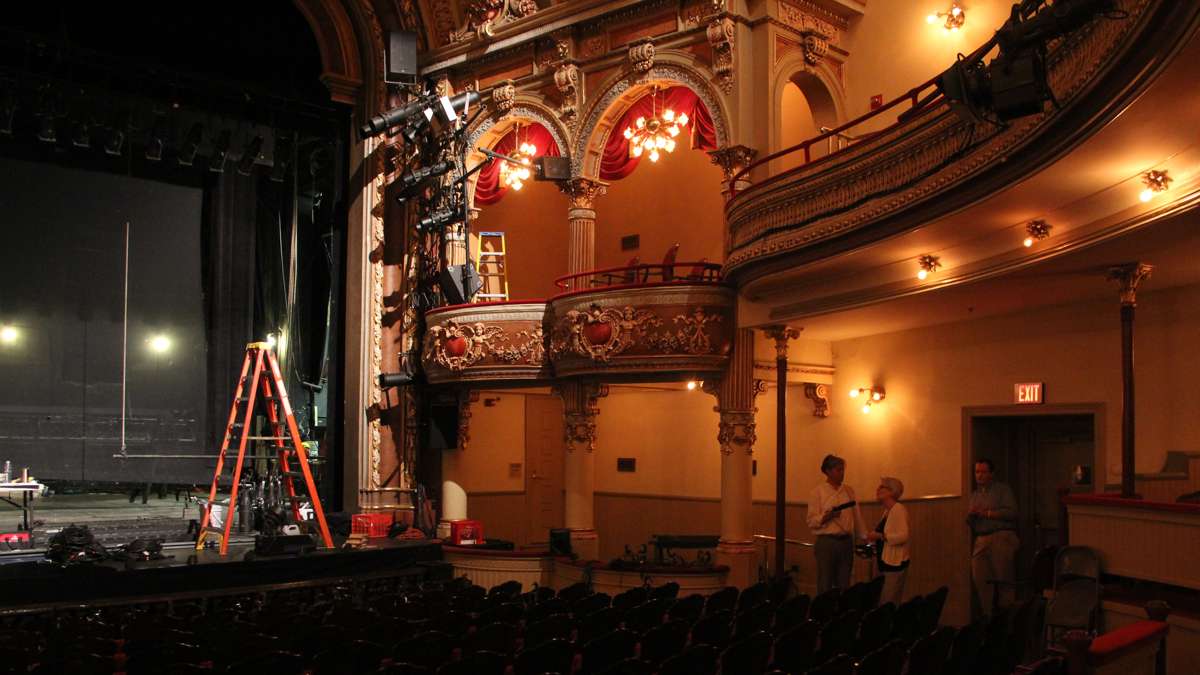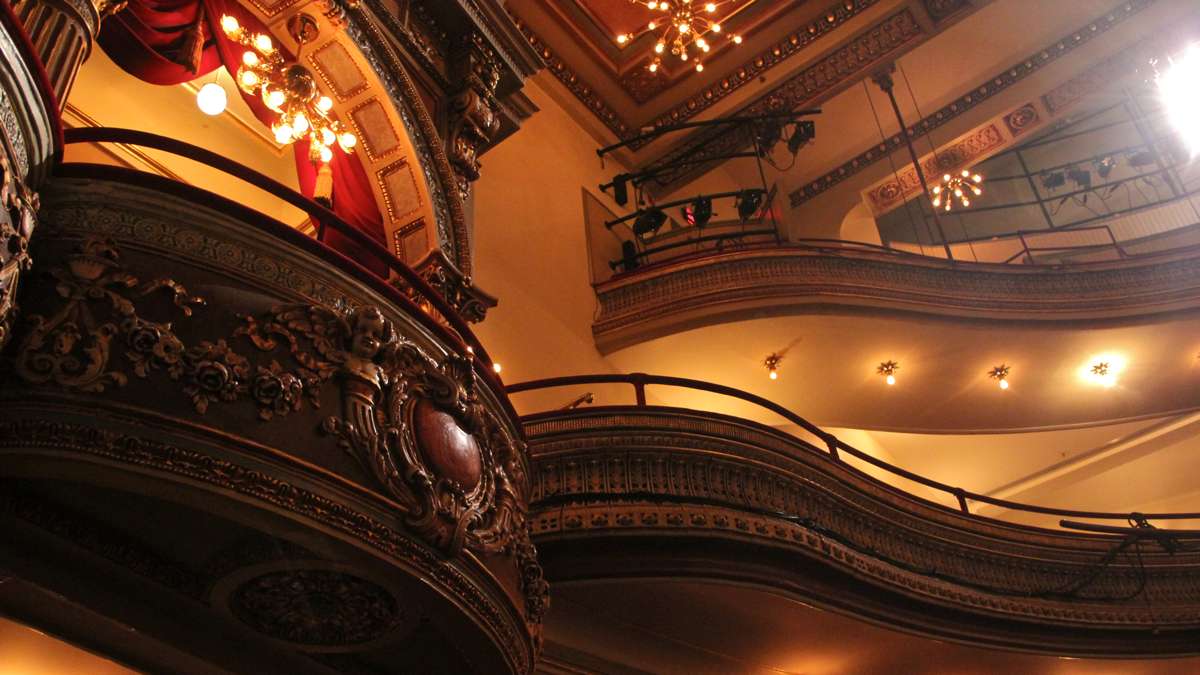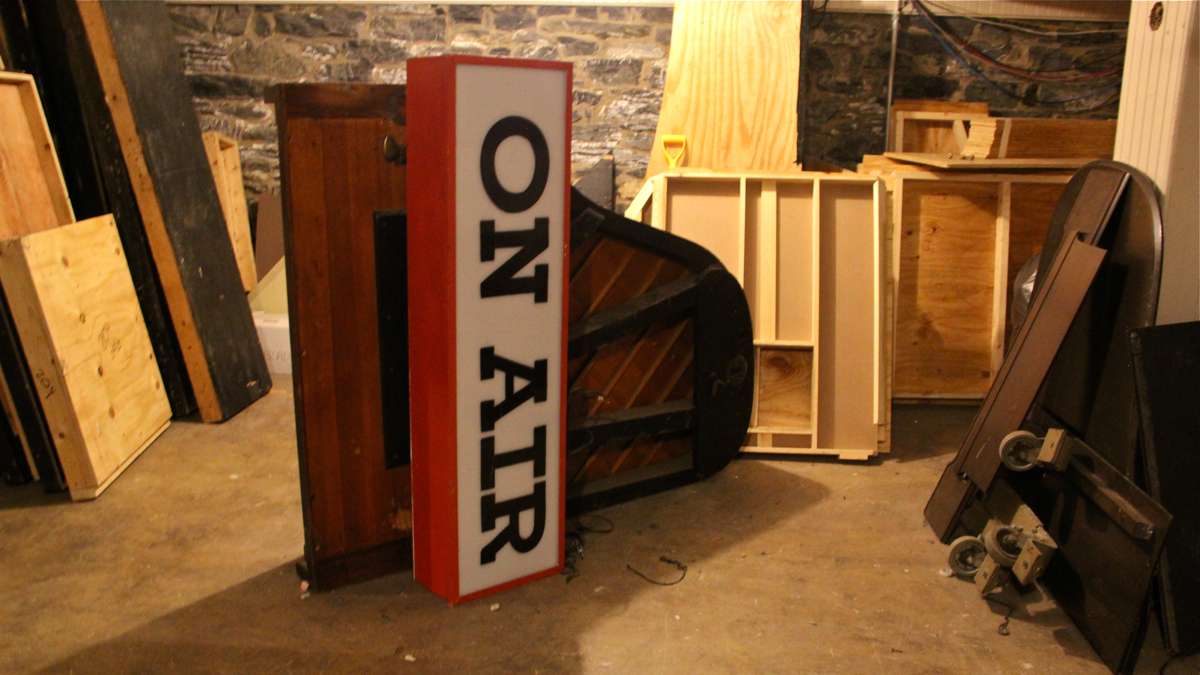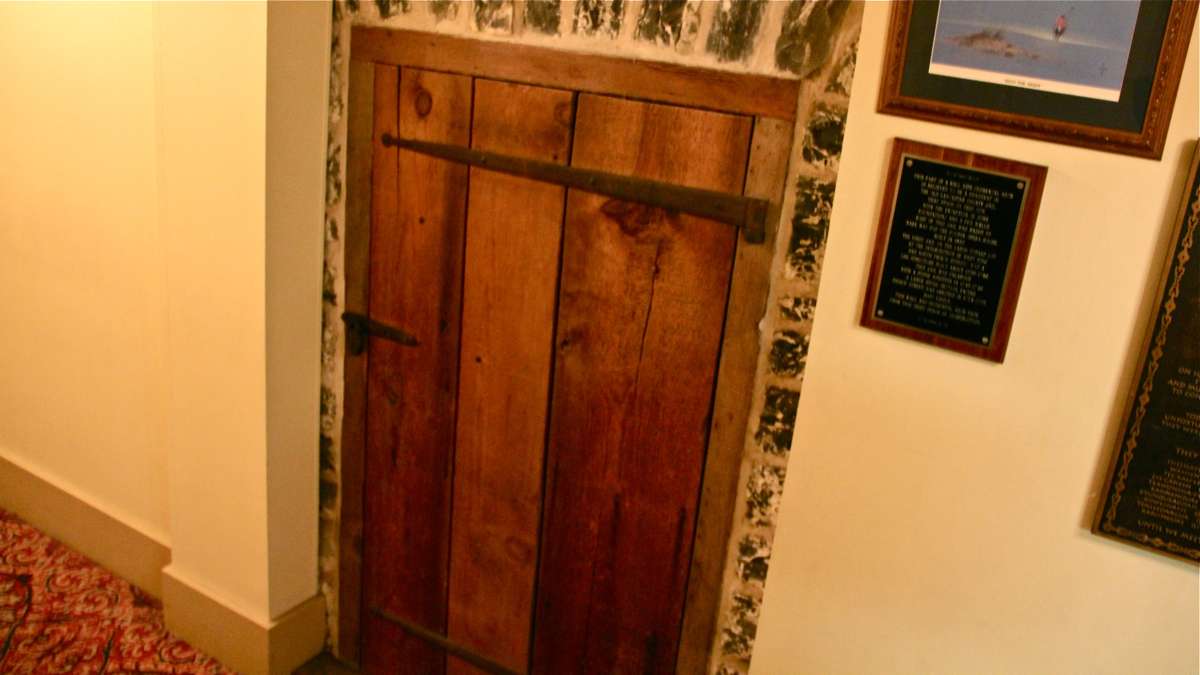Steeped in tragic history, Lancaster theater has played many roles
ListenThe Fulton Opera House in Lancaster, Pennsylvania — a jewel box theater that is one of the oldest in the U.S. — was built on top of a massacre.
The building between Prince and Water streets was built on top of rough limestone walls that had formed a Colonial-era prison. Its stones provide the foundation of the theater on top, and are still plainly visible from Water Street.
“It was built to house felons, and loose and idle persons,” said Leslie Stainton, who has written a history of the theater. “I think you can argue that these stone walls still house loose and idle persons. Right? What else do you think of actors?”
Stainton grew up inside this theater. As a child she performed on its stage, attracting accolades for her portrayal of Anne Frank. She later worked as a stagehand and, ultimately, as part of the Fulton’s administrative office before leaving to pursue writing.
She still likes to visit the basement.
“As you can feel down here, there’s a sense of being in a rabbit warren,” said Stainton on a recent visit to the cinder-block hallways that are too short to allow standing up straight. “It’s kind of creepy.”
The hallways lead down to the original prison cells, now used to store stage props. This is where the Conestoga tribe was wiped off the earth.
A Christmas massacre
In 1763, tensions between Colonists and native tribes were high. A group of rangers called the Paxton Boys raided the nearby village of the Conestogas, or Susquehannas, the last village of the tribe whose numbers were dwindling from disease. In one murderous spree, the Paxton Boys killed as many Conestogas as they could grab.
Fourteen survived the attack because they were not in the village at the time. The town magistrates in Lancaster offered them shelter in the prison, where they believed the Paxton Boys could not reach them.
But when the magistrates left to attend Christmas service at the nearby St. James Church, the rangers broke in.
“They attacked the Indians. They massacred them. They blew their brains out. The descriptions are atrocious,” said Stainton. ” Magistrates up at St. James heard pounding on doors of church, ‘The Indians are being attacked! The Indians are being attacked!’ They rushed down here, but it was over.”
It was the last of the Conestogas.
Now, in the basement where blood had been spilled, the floor is cluttered with stage lighting, drapery, and theatrical props.
“Here we are in this room that was a Colonial jail where terrible things happened, and then you have this weird prop from something,” said Stainton, jostling an “on air” sign used in the musical “Dream Girls.”
“The juxtaposition of this fake theater in all its silliness and seriousness, and this incredible historic site — I find that kind of interesting,” she said.
From town hall to Broadway shows
Later, the jail was used to hold fugitive slaves captured on the run. During the Civil War, it was used as a town hall, where the fiery Congressman Thaddeus Stevens pounded the podium and called to “free every slave — slay every traitor.”
The building became a proper theater in 1866, featuring entertainments that would provide the grist of an emerging American identity defining the country’s consciousness — performances of “Uncle Tom’s Cabin” and appearances by Buffalo Bill, from minstrel shows to Shakespeare.
“It was one of the great roadhouses. It’s story is emblematic of all American theaters,” said Stainton. “It was a huge part of how the country invented itself, and understood itself. I mean, you’re putting on plays about yourselves.”
In “Staging Ground,” Stainton exploits the poetic reality that the same site where America tried to come to terms with its itself is the same place that witnessed one of its greatest crimes.
The Fulton has been expanded and renovated many times, most recently in 1995, and now hosts Broadway fare such as “Les Miserables,” “Lend Me a Tenor,” and “The Full Monty.”
Still, those rough-hewn limestone blocks appear everywhere backstage, as though the original prison walls were growing up from the floor like a persistent mold.
WHYY is your source for fact-based, in-depth journalism and information. As a nonprofit organization, we rely on financial support from readers like you. Please give today.




